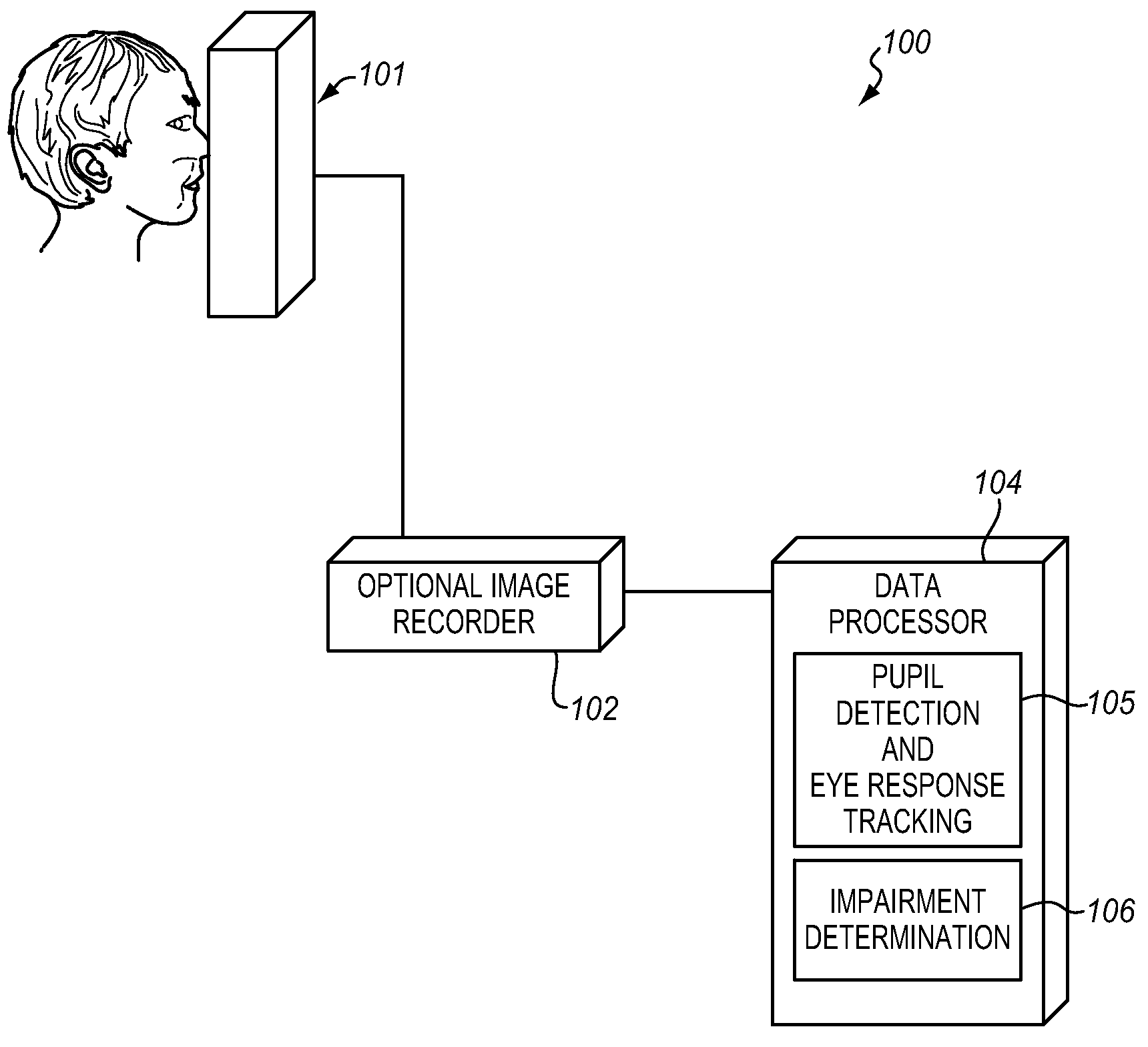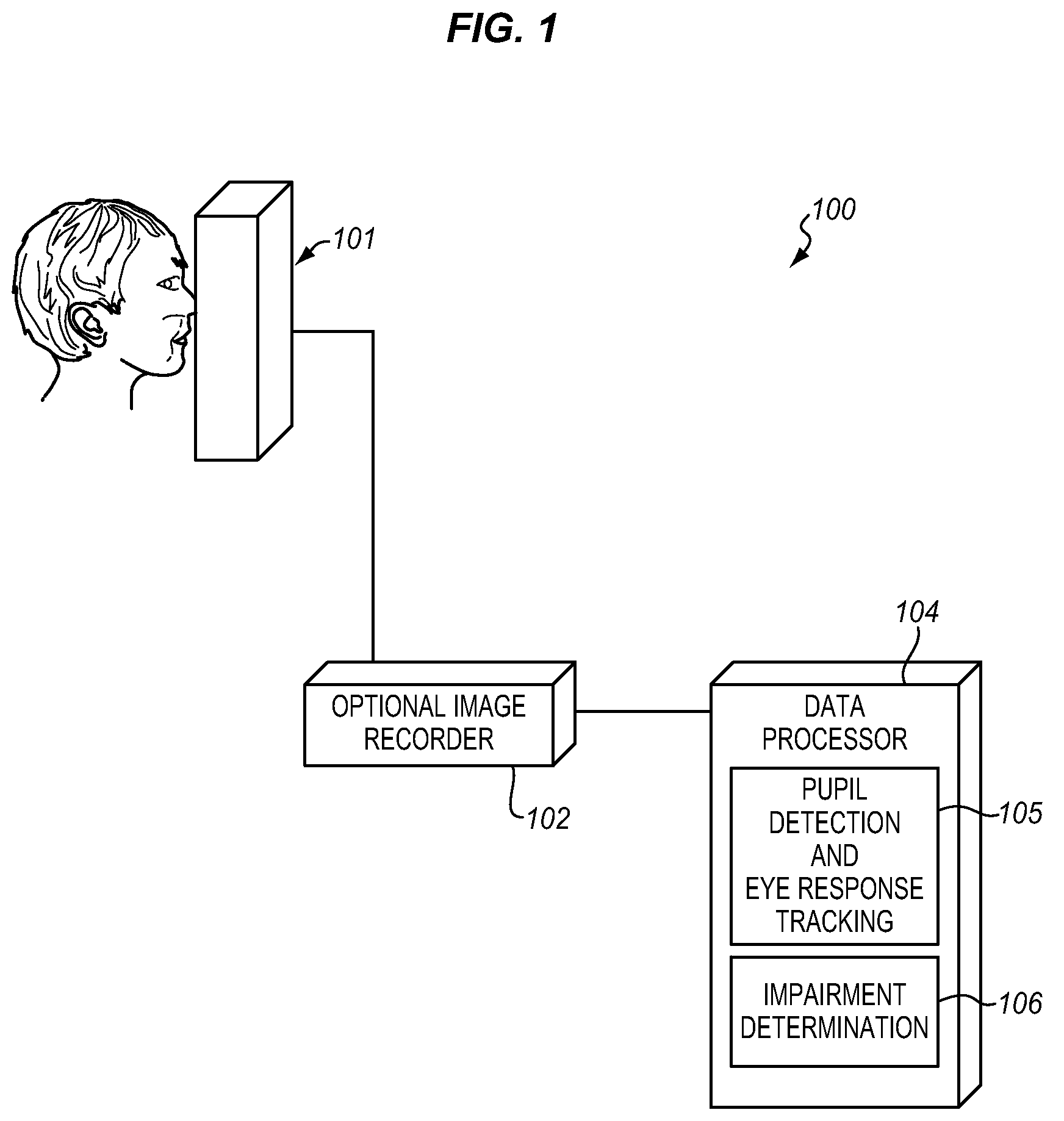System for analyzing eye responses to automatically determine impairment of a subject
a technology of eye response and subject, applied in the field of system for noninvasively determining impairment of a subject, can solve the problems of impaired subject function, impaired employee function at a reduced level of efficiency, and placing themselves and others in danger of injury, and achieve the effect of accurate determination of the subject's condition
- Summary
- Abstract
- Description
- Claims
- Application Information
AI Technical Summary
Benefits of technology
Problems solved by technology
Method used
Image
Examples
Embodiment Construction
[0021]In determining whether a subject is impaired, regardless of whether due to the use of alcohol or drugs, or whether the subject is suffering from sleep deprivation or other condition which interferes with the subject's ability to perform their assigned tasks, the measurement of the subject's eye gaze tracking and the monitoring of the subject's eye behavior can be used to determine a subject's alertness and attention. Throughout this application, reference is made to the effects of impairment by drugs. It is understood the term “drugs” herein includes not only medicinal substances and addictive narcotics, but also is to be understood to include any other ingested substance which affects the brain, such as alcoholic beverages and the like.
System Characteristics
[0022]FIG. 1 illustrates a block diagram of the present impairment determination system 100, where a user interface 101 is used to administer the predetermined test protocol to the subject and generate image data. The user...
PUM
 Login to View More
Login to View More Abstract
Description
Claims
Application Information
 Login to View More
Login to View More - R&D
- Intellectual Property
- Life Sciences
- Materials
- Tech Scout
- Unparalleled Data Quality
- Higher Quality Content
- 60% Fewer Hallucinations
Browse by: Latest US Patents, China's latest patents, Technical Efficacy Thesaurus, Application Domain, Technology Topic, Popular Technical Reports.
© 2025 PatSnap. All rights reserved.Legal|Privacy policy|Modern Slavery Act Transparency Statement|Sitemap|About US| Contact US: help@patsnap.com



